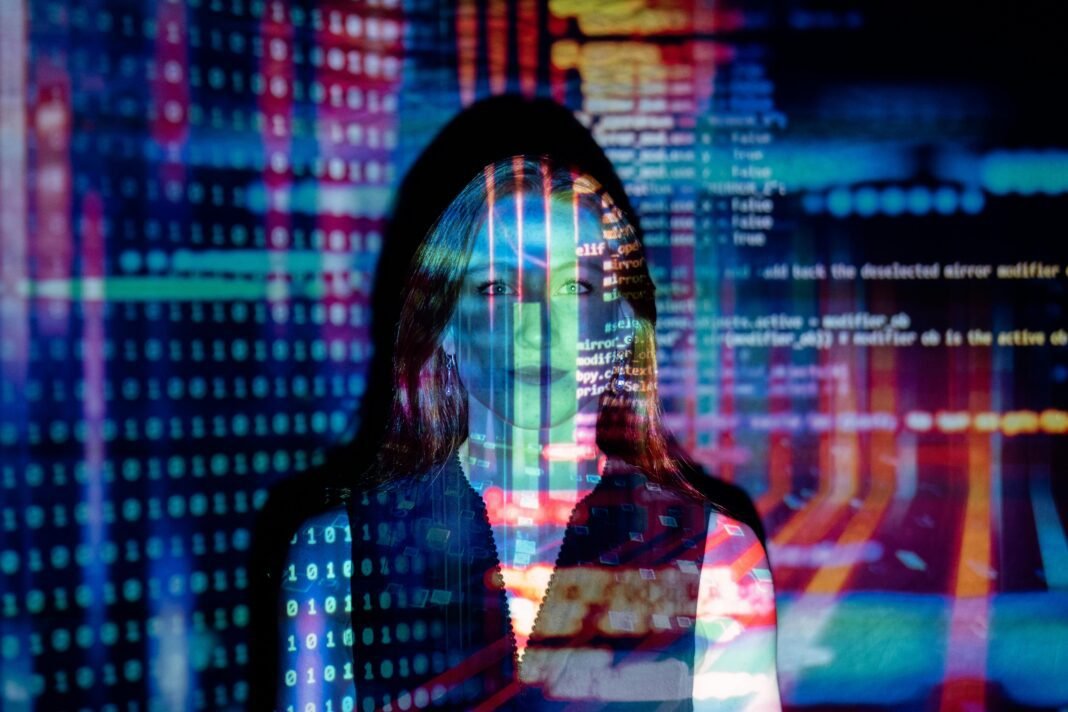Deepfake videos, which are the result of cutting-edge AI and machine learning, demonstrate complexity
These fabricated movies, commonly made using DeepFaceLab and FakeApp, raise ethical issues because of their potential for abuse. As the use of deep fake films becomes more commonplace, people will need to learn about the potential dangers associated with them.
Table of Contents
Why DeepFake Videos Are Possible and How They Work
Deep fake films employ sophisticated machine learning methods, notably generative adversarial networks (GANs). These networks combine the capabilities of content generators and discriminators to produce synthetic material that is becoming harder to tell apart from real video.
DeepFaceLab and FakeApp have become popular due to their capacity to convincingly alter a user’s appearance. The ethical implications of these technologies, however, should not be ignored, since they may be exploited to propagate falsehoods.
DeepFake Videos: Dangers and Consequences
Reputational harm, the spreading of false information, and a decrease in confidence in visual media are all problems associated with the rise of deep fake videos. In order to lessen the risk of harm, society must address the issues brought about by new technology head-on.
See how well-known South Indian actress Rashmika Mandana fell prey to Deepfake technology.
I feel really hurt to share this and have to talk about the deepfake video of me being spread online.
— Rashmika Mandanna (@iamRashmika) November 6, 2023
Something like this is honestly, extremely scary not only for me, but also for each one of us who today is vulnerable to so much harm because of how technology is being misused.…
Protecting From DeepFake Video Dangers
The best defense against deep fake attacks is a layered one:
Media Literacy
Teach the general public how to spot deep fakes by making them aware of the technology’s potential.
Verification Tools
Use online resources to sniff out video discrepancies and expose possible examples of profound fakery.
To ensure that the videos you’re watching are legitimate, you should use digital watermarks or authentication procedures.
Also, regulatory measures should be implemented to punish the production and distribution of harmful, deep-fake material.
Our knowledge of the dangers posed by technology and the safeguards we need to put in place must develop in tandem with its rapid development.
An All-in-One Resource for Keeping Your Private Data Safe in Today’s Online World
Protecting your online identity is more important than ever in today’s rapidly evolving digital world. Protecting your digital possessions, from images and movies to private data, calls for forethought and knowledge. Let’s look at some real-world ways to protect yourself against cyberattacks.
Password-protect your stronghold first
Passwords might be difficult to remember, but weak passwords invite security risks. Craft unique and strong passwords by mixing upper- and lower-case letters, numbers, and special characters. Don’t be lazy and use the same password for everything.
Use two-factor authentication (2FA) to increase security.
Adding an additional layer of safety, 2FA functions as a digital guardian. By turning on two-factor authentication (2FA), you can protect your email and social media accounts from being hacked, even if your password is stolen.
Lock down the fortress with frequent program upgrades
The software on your gadgets acts as a digital defense mechanism, blocking access to harmful websites. Maintaining a regular update schedule for your operating system, applications, and software keeps you protected against vulnerabilities.
Social Media Privacy: Securing Your Digital Journal
Your social media profiles might include a wealth of private information. Limit who may see your postings by adjusting your privacy settings, and think carefully before making some information public.
Check Out External Applications
The convenience of such third-party applications may come at the expense of your privacy. You may reduce the likelihood of unwanted access to your data by reviewing linked applications on a regular basis and revoking their access if necessary.
Encrypt Your Messages
Choose messaging apps that provide end-to-end encryption for maximum security. This guarantees that your communications stay private and safe.
Backup, since information has to have a safety net
Your images and movies are too important to risk losing them or having cybercriminals access them. Backup your information on a regular basis, preferably to the cloud.
Observe Caution Around Phishing Hooks
Cybercriminals often use techniques like “fishing” to get information. Do not open attachments or click on links in emails you did not request. If a message claims to be from a legitimate source and asks for sensitive information, you should investigate more.
Regulate Access to Your Photos and Videos Within Apps:
Check the applications that have access to your photographs and videos to make sure they don’t have too much access. Give just the access that is absolutely essential.
Defend your Wi-Fi fortress with a strong password.
Your Wi-Fi network is the entryway to your digital environment. Use a strong, unique password, and think about encrypting it with WPA3 for extra safety.
Maintain a constant vigil over your realm.
Keep your guard up by checking your account history often. Any suspect or illegal access should be reported immediately.
Knowledge is power, so keep learning and reading.
Get up-to-date on current cyberthreats and safety procedures. The best defense is a well-informed offense.
Adopt a Virtual Private Network (VPN) Shield
Use a virtual private network (VPN) to encrypt your internet connection and prevent data theft while connecting to public Wi-Fi networks.
Add Guards against Viruses and Malware
Put in place reliable anti-virus and anti-malware software to fortify your digital defenses. These protectors may stop harmful programs from breaching your system’s defenses.
Protecting yourself online is an essential part of contemporary life. With these simple precautions in place, you may confidently move around the online world, knowing that your private data is safe. Be watchful, aware, and diligent in defending your online stronghold.
FAQs
- Where do deep fake videos come from, and what are they?
- What tools are typically utilized to make deep fake videos?
- What dangers do deep false videos provide to people and to society as a whole?
- What precautions can I take against deep-fake attacks?
- What measures can I take to safeguard my online identity and other sensitive data?
- Can I take any special precautions to safeguard the media stored on my devices?
- How can my education help ensure my digital safety?
- In what ways may I expect a virtual private network to improve my online safety?
- Why should account activity be monitored on a frequent basis?
- To what extent do we need antivirus and anti-malware software to feel safe online?




